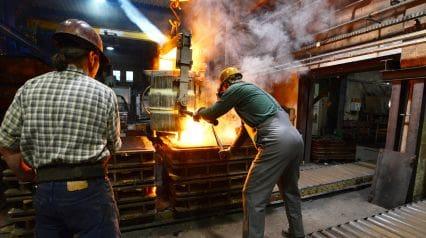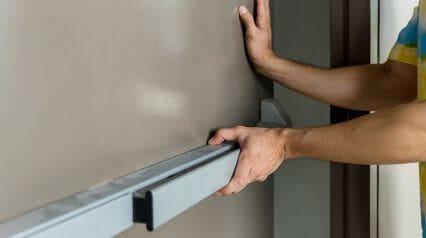What is Fire Safety Training?
Fire safety training is a structured program designed to teach individuals how to prevent, respond to, and reduce the risks associated with fires. The curriculum encompasses fire hazard identification, safe practices, and prompt emergency responses, from correctly using fire extinguishers to organized evacuations. An indispensable aspect of workplace safety, this should be taught to everyone in the organization—from top management to independent contractors and service providers.
Significance
Workplace fires are a serious concern for companies across industries. According to the Occupational Safety and Health Administration (OSHA), there are more than 200 fire incidents in the workplace every day, with over 5,000 getting injured annually. With these numbers, taking proactive action through fire safety training for employees is a must-do.
- Protects Life – The number one objective of any fire safety program is to safeguard the employees from harm. When workers are aware of even the basics of fire prevention, the use of fire-suppressing equipment, and evacuation procedures, they can protect themselves and others in any emergency.
- Preserves Property – Direct property damage from the recorded 16,500 store and office fires amounted to $932 million in property damage. By training workers on basic fire safety, the company minimizes financial losses due to destruction and resulting repairs. On top of this, having comprehensive fire safety programs lowers the insurance premiums of businesses, which is another source of cost savings.
- Boosts Employee Morale – Employees equipped with knowledge, skills, and equipment for fire safety are more confident when responding to emergencies. And when they know their company has their back by preventing injurious incidents, they feel more secure in their environment and will perform better at work.
- Ensures Compliance with Regulations – Because of the grave consequences of fires, the government mandates that businesses provide adequate training for employees. Since it is incredibly serious, regular inspections are conducted to ensure this. Any form of non-compliance will be dealt with in penalties, legal liabilities, and insurance complications.
- Improves Reputation and Public Relations – When an organization demonstrates its commitment to safety through continued and comprehensive training, it shows that they are a trusted pillar in the community. It benefits their image in the public, which directly impacts their bottom line as well.
Key Components
Topics covered in fire safety training greatly depend on the size of the organization and the industry they belong to. While businesses in high-risk industries (e.g., mining, large-scale construction, and oil and gas) need to plan a more comprehensive program because of the inherent dangers in their environments, all companies should make sure the basics are tackled:
Fire Prevention
The best method to protect people and property from fires and to minimize operational disruption is to prevent the fire from starting in the first place. It may seem like a commonsensical idea that does not require rigorous training. But the occurrence of fires has never ceased, so it should still be a top priority. Here are some points to take note of:
- Fire hazard identification (primary and secondary ignition sources)
- Safe storage of materials, particularly combustible gases and flammable objects
- Assessment of high-risk procedures, like welding, grinding, and blasting
- Occupant behavior, such as smoking on the premises or lack of housekeeping measures
Create Your Own Fire Prevention Checklist
Eliminate manual tasks and streamline your operations.
Get started for FREEFire Detection and Communication
In the past, people discovered fires when they smelled smoke; when the fire had grown, it could be felt and seen. Fortunately, there are automatic systems that can detect and suppress fires today. Training for this should focus on the different types of detection and alarm systems in place and how to properly maintain them.
Should an outbreak occur, the company should be able to minimize its impact by promptly sharing detailed information with skilled personnel like firefighters and emergency response teams and alerting stakeholders who may be affected by the incident.
Fire Suppression
Most modern buildings are equipped with a fire suppression system that would turn on as soon as any indication of fire is detected (e.g., smoke, electrical spark, temperature increase).
Sprinkler systems are the most common since water puts out flames. But others use systems with nitrogen and argon in case of electrical fires.
Hand-held fire suppressors or fire extinguishers are a must-have for all organizations. It is incredibly effective in dousing fires within two minutes 93% of the time. This is also why fire extinguisher use is always a part of all fire safety training programs.
- Operating a fire extinguisher through P A S S or pull the pin, aim low, squeeze the lever slowly, sweep the nozzle side-to-side)
- The different kinds of fire extinguishers (e.g., water, foam, dry powder, CO2, and wet chemical) and the appropriate type to use
- The location of fire extinguishers in the building
- Equipment testing and maintenance
Other safety equipment that could effectively keep fires under wraps are fire hose reels (for Class A fires), hydrants and other sources, and fire blankets (for Class F fires).
Occupant Protection
This part of the program facilitates the avoidance and escape from fire. Fire and smoke tend to spread quickly. Without knowledge of where to go, the possibility of getting trapped increases. Here are some specific topics to be discussed under this key component:
- Evacuation procedure
- Full layout of the floor and the building
- Exit or escape routes (primary and secondary routes)
- Activating other alarms on site while exiting the building
- Designated assembly sites after evacuation
- Location of first-aid stations
- Procedure for assisting people with disabilities
The best way for workers to learn about this and apply it effectively in real-life situations is by regularly conducting fire drills. It would also be helpful if managers get feedback from employees to determine if they understood the exercise and if improvements are needed in the evacuation plan.
Emergency Response
Various parties are deployed in any fire crisis, including local fire departments, rescue teams, and emergency medical services. They provide expert support when the incident is too grave for the company to handle.
Nonetheless, training the workforce on what should be done is the responsibility of the in-house safety officers. While the main focus of the employees is to evacuate to a pre-determined site as far away from the facility, they should still have an idea about the entire process based on the workplace emergency plans. Here are some vital points to be apprised of:
- Method for reporting incidents and alerts
- Emergency shutdown procedures
- Clear chain of command with individual roles and responsibilities
- Emergency contacts for coordination, especially the safety officers, team leaders, and department heads
Best Practices
Having a fire safety training program can make the difference between chaos and order during a fire emergency. Managers often face numerous challenges throughout the process, from developing a comprehensive curriculum to engaging the trainees during learning sessions. But the following best practices may clear the way for success.
- Customize the Program to Your Workers’ Needs – It is vital to address the unique hazards and risks in a particular working environment. To effectively tailor the content based on the organization’s needs, constantly conduct inspections with digital checklists to identify hazards and use analytics to determine gaps in current protocols and the workforce’s knowledge. All these create a well-planned curriculum and more effective emergency response.
- Conduct and Update Training Regularly – Send out refresher courses monthly and schedule periodic drills to help reinforce the knowledge and skills workers acquired during the initial training. It would also be wise to stay current with changing regulations to ensure compliance.
- Establish Training Teams – While it is cost-effective to hire third-party trainers, it is best to designate skilled individuals within the organization as fire safety officers or marshals. Not only can they create courses and lead drills, but they could also serve as point persons and emergency coordinators when calamities strike.
- Evaluate Progress by Collecting Feedback – Delve into the workers’ learning experience and assess the effectiveness of the entire program by asking them for their opinions and suggestions for improvement.
- Leverage Technology – Learning Management Systems feature tools that ensure training programs are relevant, engaging, and effective. First, it automates numerous administrative tasks required to build the program and monitor progress. Secondly, it is relatively more cost-effective and sustainable. Finally, it enhances the learning experience through interactive simulations and allows users to access files 24/7.
Must-Have Digital Tools for Effective Fire Safety Training
Technology is integral to learning and development. SafetyCulture’s Training is the platform that can assist you in your goals of protecting the entire workforce in case of fire emergencies. Whether you’re just in the planning phase, designing courses and specific drills, or sharing online fire safety training modules and quizzes with different teams, this digital solution you need for effective onboarding, upskilling, and safety training.




